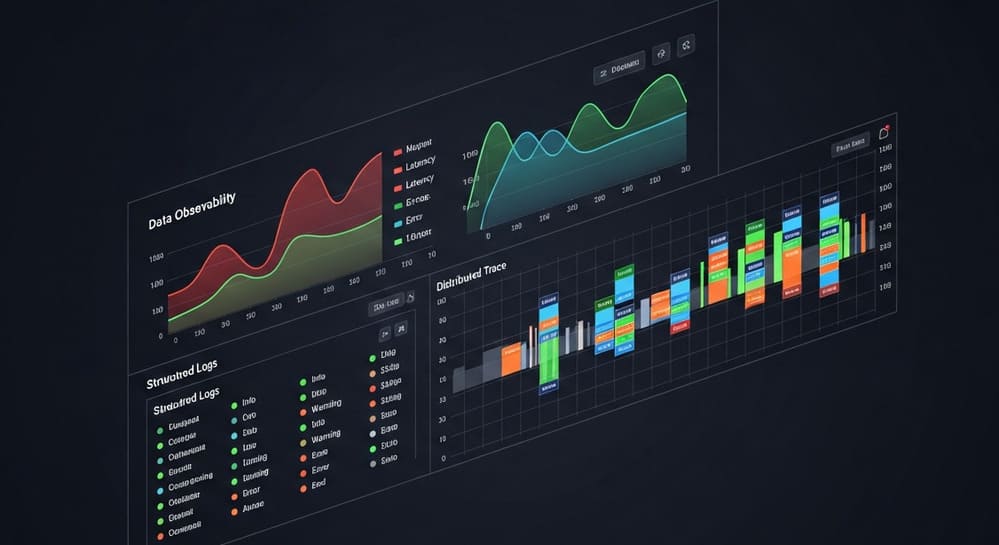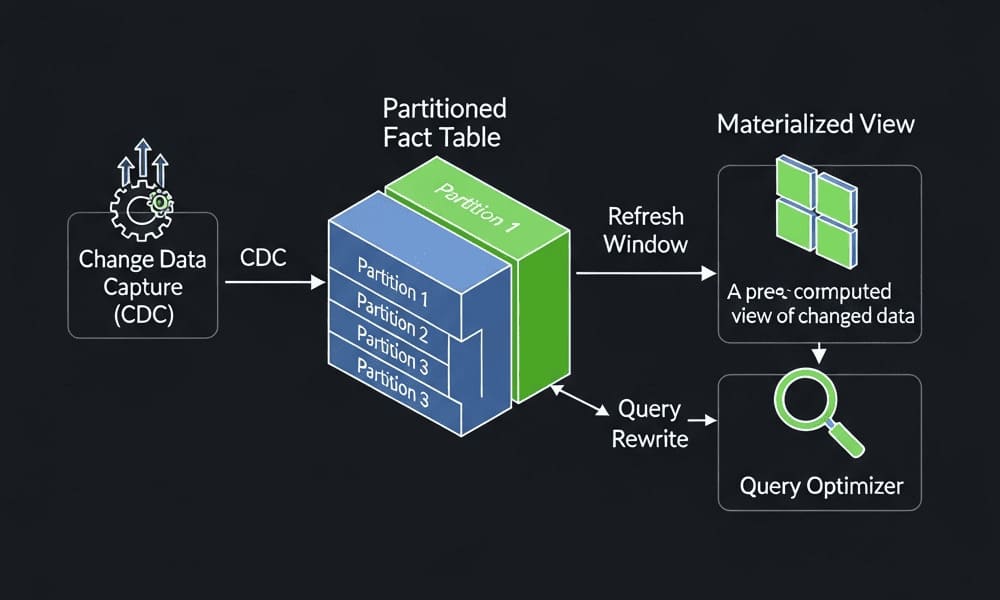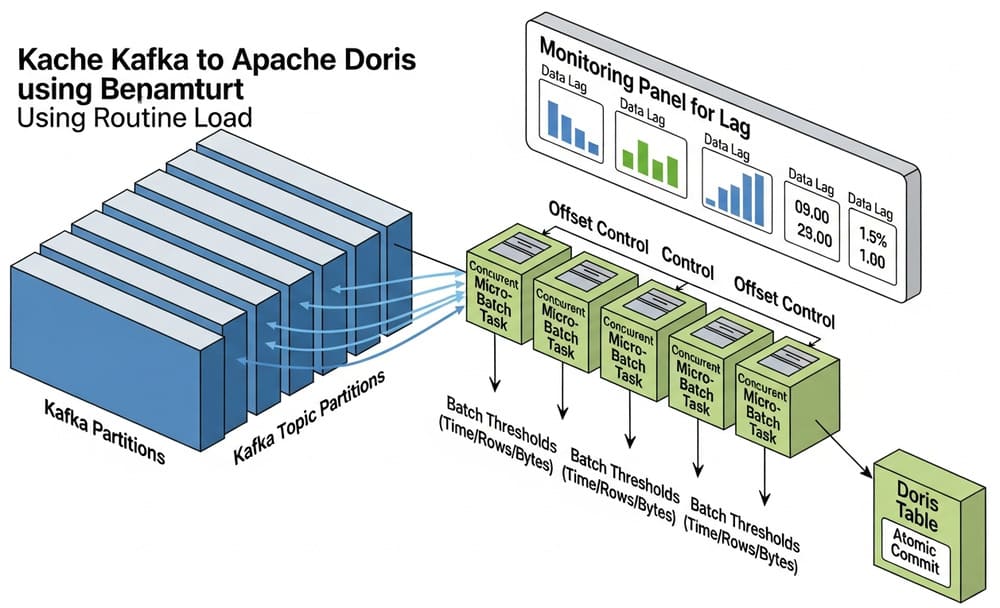Data Visualization Tools in 2026: From Dashboards to Business Intelligence
Introduction
Data without visualization is just numbers in a database. Good visualization turns those numbers into insights that drive decisions.
The visualization tool market has matured significantly. Traditional BI platforms like Tableau and Power BI dominate enterprise deployments. Open source tools like Grafana and Superset power operations and analytics at tech companies. Cloud-native options like Looker and QuickSight integrate seamlessly with modern data stacks.
Choosing the wrong tool is expensive. You pay in licensing costs, time spent building dashboards, and missed insights when people can’t get the data they need.
This guide covers 10 major visualization and BI tools. You’ll learn what each does best, where it falls short, and how to match tools to your specific needs.
What Makes a Good Visualization Tool?
The basics seem simple. Connect to data sources, build charts, share dashboards. But the details matter.
Data connectivity determines what you can visualize. Some tools connect to dozens of sources natively. Others require workarounds or external ETL.
Query performance affects user experience. Slow dashboards don’t get used. The best tools optimize queries, cache results, and handle large datasets gracefully.
Visual flexibility ranges from drag-and-drop simplicity to full customization. Different users need different levels of control.
Collaboration features matter for teams. Sharing, commenting, version control, and access management determine how well teams work together.
Deployment options span fully managed SaaS to self-hosted open source. Your infrastructure and security requirements drive this choice.
Enterprise BI Leaders
Tableau
Tableau has been the gold standard for data visualization since 2003. It’s known for beautiful, interactive visualizations and powerful analytics capabilities.
What it does well:
- Best-in-class visualization capabilities
- Intuitive drag-and-drop interface
- Strong statistical and analytical functions
- Large ecosystem of extensions and connectors
- Active community and extensive training resources
Where it struggles:
- Expensive licensing (especially at scale)
- Performance can degrade with very large datasets
- Steep learning curve for advanced features
- Server administration requires dedicated resources
Tableau excels when visual exploration and advanced analytics matter. Data analysts love it because they can build complex visualizations without writing code. The calculation engine handles sophisticated aggregations and statistical functions.
The pricing model is a barrier for many teams. Desktop licenses, server costs, and per-user fees add up quickly. But for organizations that need powerful ad-hoc analysis, the investment often pays off.
Best for: Enterprise analytics teams, data analysts who need advanced visualization, organizations with budget for premium tools
Common use cases: Executive dashboards, sales analytics, customer behavior analysis, financial reporting
Power BI
Power BI is Microsoft’s answer to Tableau. It’s grown rapidly because of tight Office 365 integration and competitive pricing.
What it does well:
- Deep Microsoft ecosystem integration
- Attractive pricing (especially with E5 licenses)
- Strong DAX calculation language
- Good mobile experience
- Regular feature updates from Microsoft
Where it struggles:
- Windows-centric (though web version exists)
- Less elegant than Tableau for complex visualizations
- Service can feel fragmented (Desktop, Service, Premium)
- Performance issues with very large datasets
Power BI works best in Microsoft-heavy environments. If you’re already using Office 365, Azure, and SQL Server, Power BI integrates naturally. The licensing can be extremely cost-effective when bundled with other Microsoft products.
The DAX language is powerful but has a learning curve. Power Query for data transformation is useful but can be confusing for beginners.
Best for: Microsoft-centric organizations, teams already on Office 365, cost-conscious enterprises
Common use cases: Corporate reporting, departmental dashboards, self-service BI, embedded analytics
Looker
Looker takes a different approach. Instead of connecting directly to data, you define a semantic layer in LookML. This modeling language describes your data once, then everyone queries through that abstraction.
What it does well:
- Centralized data modeling prevents metric inconsistencies
- Version-controlled semantic layer
- Strong governance and access control
- Git-based workflow for analytics engineers
- Embedded analytics capabilities
Where it struggles:
- Requires investment in LookML development
- Steeper learning curve than drag-and-drop tools
- Fully cloud-based (no on-premises option)
- Can be expensive at enterprise scale
Looker shines in organizations that need governed, consistent metrics. When different dashboards show different numbers for the same metric, trust erodes. Looker solves this by making everyone use the same definitions.
The LookML modeling layer is both a strength and a weakness. It ensures consistency but requires dedicated resources to build and maintain.
Since Google acquired Looker in 2019, integration with BigQuery and Google Cloud has improved significantly.
Best for: Data-mature organizations, teams with analytics engineers, companies needing governed metrics
Common use cases: Self-service analytics with guardrails, embedded customer analytics, metric standardization, regulated industries
Open Source and Developer-Friendly Options
Grafana
Grafana started as a metrics visualization tool. It’s become the standard for monitoring and observability dashboards.
What it does well:
- Excellent time-series visualization
- Supports dozens of data sources
- Beautiful, customizable dashboards
- Strong alerting capabilities
- Free and open source (with commercial options)
Where it struggles:
- Less suitable for business intelligence
- Limited support for non-time-series data
- Query editor can be complex
- Not designed for ad-hoc exploration
Grafana dominates infrastructure monitoring, application performance monitoring, and IoT dashboards. If your data has timestamps and you need to track it over time, Grafana is hard to beat.
The plugin ecosystem is extensive. You can connect to Prometheus, InfluxDB, Elasticsearch, CloudWatch, and many other sources. The alerting system integrates with PagerDuty, Slack, and other notification channels.
Grafana Cloud offers managed hosting. Grafana Enterprise adds features like reporting, enhanced authentication, and support.
Best for: DevOps teams, infrastructure monitoring, application observability, IoT analytics
Common use cases: Server monitoring, application metrics, business KPIs over time, IoT sensor data
Apache Superset
Superset is Airbnb’s open source BI platform. It’s grown into a serious alternative to commercial tools.
What it does well:
- Modern, intuitive interface
- SQL Lab for data exploration
- Supports many databases natively
- Active development and community
- Free and open source
Where it struggles:
- Self-hosting requires maintenance
- Less polished than commercial tools
- Smaller ecosystem than Tableau or Power BI
- Documentation can be sparse
Superset works well for teams comfortable running their own infrastructure. The SQL Lab feature lets analysts write SQL, see results, and turn queries into visualizations. This workflow feels natural for data teams.
The visualization library covers common chart types. For specialized needs, you might find limitations compared to Tableau. But for standard dashboards and exploratory analysis, Superset delivers.
Preset offers managed Superset hosting for teams that want the tool without operational overhead.
Best for: Tech-savvy teams, startups, open source advocates, teams with DevOps resources
Common use cases: Internal analytics dashboards, data exploration, departmental reporting, startup BI
Metabase
Metabase positions itself as BI for everyone. The interface is deliberately simple, designed for business users who don’t write SQL.
What it does well:
- Extremely simple to use
- Quick setup and deployment
- Good for basic analytics
- Open source with reasonable cloud pricing
- Clean, modern interface
Where it struggles:
- Limited advanced features
- Less flexible than other tools
- Smaller visualization library
- Performance with large datasets
Metabase excels at democratizing data access. Non-technical users can build simple charts and dashboards without help from analysts. The “question” builder guides users through filtering and grouping data.
For teams just starting with BI, Metabase reduces friction. You can spin up an instance in minutes and start answering questions. As needs grow more sophisticated, you might outgrow it.
Best for: Small teams, startups, non-technical users, simple analytics needs
Common use cases: Basic KPI dashboards, operational reporting, customer support metrics, startup analytics
Redash
Redash is SQL-centric. You write queries, visualize results, and share dashboards. It’s popular with data teams that prefer code to GUIs.
What it does well:
- SQL-first workflow
- Query sharing and collaboration
- Supports many data sources
- Alerting based on query results
- Open source and affordable
Where it struggles:
- Requires SQL knowledge
- Basic visualization options
- Limited advanced analytics features
- Development has slowed (acquired by Databricks)
Redash fits teams where everyone writes SQL. Analysts can share queries, other team members can fork and modify them. The parameterized queries feature lets you build flexible reports.
The visualization capabilities are functional but not fancy. You get the standard chart types. For complex visualizations, you’d need to look elsewhere.
Databricks acquired Redash in 2020. Development continues but at a slower pace than before.
Best for: SQL-proficient teams, data analysts, query-centric workflows
Common use cases: Ad-hoc analysis, query sharing, simple dashboards, database monitoring
Cloud-Native Options
Amazon QuickSight
QuickSight is AWS’s fully managed BI service. It’s designed to work seamlessly with AWS data sources.
What it does well:
- Serverless and fully managed
- Tight AWS integration
- SPICE in-memory engine for performance
- Pay-per-session pricing option
- ML-powered insights (Q and anomaly detection)
Where it struggles:
- Less mature than Tableau or Power BI
- Limited outside AWS ecosystem
- Visualization options are adequate but not exceptional
- Less intuitive than competitors
QuickSight makes sense when you’re all-in on AWS. Native integration with S3, Redshift, Athena, and RDS simplifies connectivity. The SPICE engine handles large datasets well.
The pricing model is attractive for organizations with many occasional users. Pay-per-session means you’re not paying for seats that barely get used.
The Q feature lets business users ask questions in natural language. It works reasonably well for simple queries but struggles with complexity.
Best for: AWS-centric organizations, companies with many occasional users, serverless architectures
Common use cases: AWS infrastructure dashboards, cost monitoring, embedded analytics, operational dashboards
Mode
Mode combines SQL notebooks, visualization, and reporting. It’s built for analysts who want flexibility and collaboration.
What it does well:
- Notebook interface for exploration
- SQL, Python, and R support
- Good collaboration features
- Version control and change tracking
- Embedded analytics capabilities
Where it struggles:
- More expensive than some alternatives
- Learning curve for the notebook paradigm
- Less suitable for non-technical users
- Visualization customization can be limited
Mode targets analytics teams that work in code. The notebook interface lets you combine SQL queries, Python analysis, and visualizations in one place. This workflow mirrors how many analysts actually work.
The collaboration features are strong. You can comment on reports, track changes, and share analyses easily. The editor supports themes and customization.
For teams that need governed, production dashboards alongside exploratory analysis, Mode hits a sweet spot.
Best for: Analytics teams, data scientists, organizations needing exploration and reporting
Common use cases: Exploratory analysis, ad-hoc reporting, executive dashboards, embedded customer analytics
Kibana
Kibana is the visualization layer for the Elastic Stack. It’s designed specifically for Elasticsearch data.
What it does well:
- Deep Elasticsearch integration
- Strong log and event analysis
- Real-time data visualization
- Machine learning features
- Part of a complete observability stack
Where it struggles:
- Tied to Elasticsearch
- Not designed for general BI
- Can be complex to set up
- Resource-intensive
Kibana dominates log analysis and security monitoring. If you’re using Elasticsearch for logs, metrics, or security events, Kibana is the natural choice.
The Lens feature simplified visualization creation. Discover lets you explore data interactively. The alerting and machine learning features handle anomaly detection and threshold monitoring.
Elastic Cloud offers managed hosting. Self-hosting the full Elastic Stack requires significant infrastructure.
Best for: Log analysis, security monitoring, observability, Elasticsearch users
Common use cases: Application logs, security events, infrastructure monitoring, search analytics
Choosing the Right Tool
The best visualization tool depends on your specific context. Here’s how to think through the decision.
Consider your users. Are they data analysts comfortable with SQL? Business users who need simple charts? Executives who want polished dashboards? Different users need different tools.
Evaluate your data sources. Some tools connect easily to certain databases. If you’re on Snowflake, check native support. If you’re using Postgres, most tools work fine.
Think about scale. How many dashboards will you build? How many users need access? Some tools price per user, others per viewer. Cost structures matter.
Assess technical resources. Can you run and maintain infrastructure? Or do you need fully managed services? This eliminates whole categories of tools.
Check integration needs. Do you need to embed dashboards in applications? Integrate with existing tools? Make sure your choice supports these scenarios.
Evaluate governance requirements. Regulated industries need audit logs, access controls, and certified datasets. Not all tools handle this equally well.
Test visualization capabilities. Build a prototype dashboard with each tool you’re considering. Some things only become clear when you actually use the product.
Consider total cost. License fees are just the start. Factor in implementation time, training, maintenance, and infrastructure costs.
Common Patterns and Best Practices
Separate exploration from production. Use different tools for ad-hoc analysis and production dashboards. SQL notebooks for exploration, polished BI tools for executives.
Invest in data modeling. The best visualization tool can’t fix bad data. Clean, well-modeled data makes everything easier.
Establish design standards. Create templates and style guides. Consistent dashboards are easier to understand and maintain.
Build for performance. Slow dashboards don’t get used. Pre-aggregate data, use caching, and optimize queries.
Monitor usage. Track which dashboards people actually use. Sunset the ones that don’t provide value.
Version control everything. Treat dashboards like code. Track changes, review updates, and maintain history.
Test on real data volumes. Dashboards that work on sample data can fall apart with production scale.
Plan for mobile. More people access dashboards on phones and tablets. Test mobile layouts.
Document assumptions. Explain how metrics are calculated. Future maintainers will thank you.
Emerging Trends
The visualization landscape keeps evolving. Several trends are shaping what comes next.
AI-powered insights are becoming standard. Tools suggest interesting patterns, detect anomalies, and answer natural language questions. This makes data more accessible to non-analysts.
Real-time dashboards are easier to build. Modern data stacks with tools like ClickHouse and DuckDB handle real-time aggregations that used to require specialized infrastructure.
Metrics layers are standardizing definitions. Tools like dbt metrics and Transform define metrics once, use them everywhere. This reduces inconsistency across dashboards.
Embedded analytics is growing. Companies embed dashboards in their products for customers. This requires different features than internal BI.
Collaboration features are improving. Commenting, sharing, and working together on analyses is getting smoother.
Mobile-first design is becoming expected. Tools optimize for touch interfaces and smaller screens.
Key Takeaways
Visualization tools transform data into insights. The right choice depends on your users, data sources, and requirements.
Tableau and Power BI dominate enterprise BI for good reason. They’re mature, powerful, and well-supported. Tableau excels at advanced visualization. Power BI wins on Microsoft integration and pricing.
Looker brings governance and consistency through its semantic layer. The investment pays off for data-mature organizations.
Open source options like Grafana and Superset work well for technical teams. Grafana owns monitoring and observability. Superset provides solid general BI without licensing costs.
Simpler tools like Metabase serve small teams and non-technical users. They reduce time to first dashboard at the cost of advanced features.
Cloud-native options integrate seamlessly with specific platforms. QuickSight for AWS, Kibana for Elasticsearch.
Most organizations end up with multiple tools. Grafana for infrastructure, Tableau for business analytics, Superset for data team exploration. This is fine. Use the right tool for each job.
Start with user needs, not tool features. What questions are people trying to answer? What workflows do they use? Pick tools that fit how people actually work.
Tags: data visualization, business intelligence, BI tools, Tableau, Power BI, Grafana, Apache Superset, Looker, dashboards, data analytics, Metabase, QuickSight, Kibana, analytics tools, data reporting, visualization platforms, BI platforms, data dashboards, enterprise analytics





